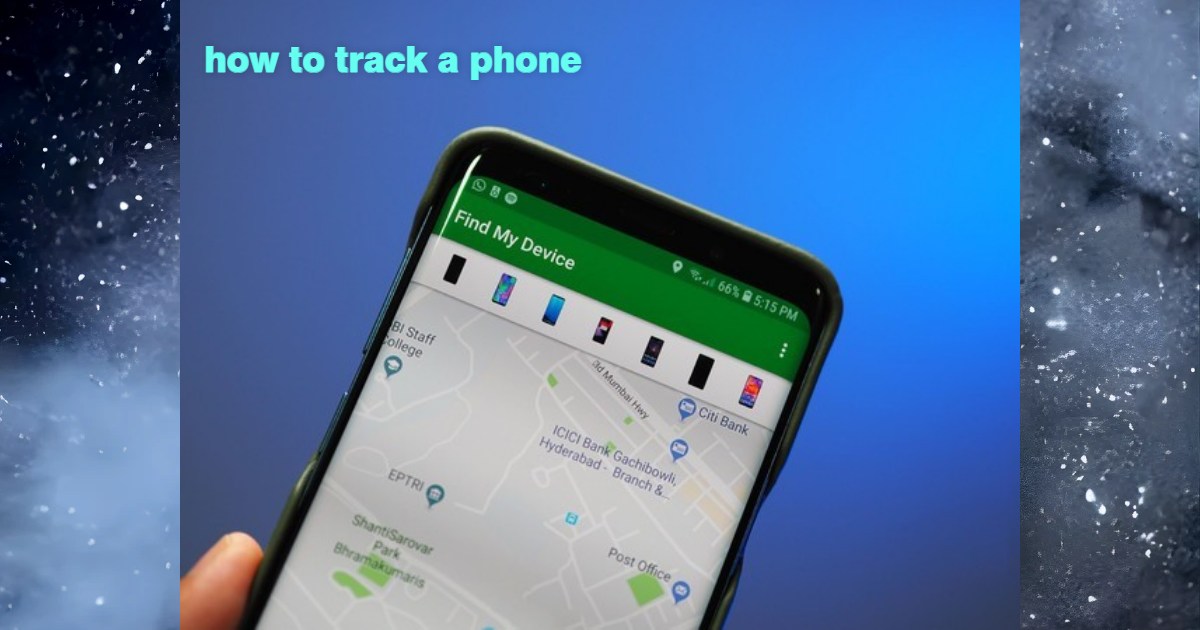Tracking a phone has become increasingly important for a variety of reasons. Whether you want to locate a lost phone, keep an eye on your child’s whereabouts, or monitor your employee’s location, there are many ways to track a phone. From built-in features on the device to specialized tracking apps, several options can help you locate a phone’s exact location in real-time. In this article, we will explore some of the most effective ways how to track a phone and some important considerations to keep in mind.
Table of Contents
Why You May Need to Track a Phone:
You may need to track a phone for many reasons, ranging from personal to professional purposes. For instance, locate your lost or stolen phone, monitor your child’s or employee’s whereabouts, or monitor a loved one’s safety. With the advanced technology available today, tracking a phone is easier than ever, and there are various methods and tools you can use to do so. However, it’s important to note that privacy laws and ethical considerations should always be considered when tracking someone’s phone.
Which Devices Can Be Tracked?
The number of devices that can be tracked is constantly expanding. Initially, mobile phones, tablets, and laptops were the most commonly tracked devices, but now a wide range of devices can be tracked. This includes wearable devices such as fitness trackers and smartwatches that use GPS to track location and activity data. Moreover, the Internet of Things (IoT) has enabled the tracking of everyday objects such as home appliances, vehicles, and even pets.
Electronic toll collection systems, such as EZ-Pass, can also track vehicles passing through toll booths. Many businesses use employee badges equipped with RFID or Bluetooth technology to track attendance and movements within the workplace. Finally, social media platforms collect vast amounts of data on users and their activities, allowing them to be tracked across multiple devices. As technology continues to advance, the range of devices that can be tracked will continue to expand, raising important questions about privacy and data protection.
How to Track With an Apple Device:
Apple devices offer a wide range of features that allow users to track their daily activities, health, and even location. Whether you want to keep track of your fitness goals or keep an eye on your children’s whereabouts, Apple devices provide numerous options to help you stay organized and in control.
Tracking with an Apple device can be done in various ways. Here are some of the methods:
Find My app.
The Find My app is a built-in app on iPhones, iPads, and Macs that allows you to locate your Apple device if it’s lost or stolen. To use the Find My app, make sure it’s enabled in your iCloud settings, and then log in to the app with your Apple ID. You’ll be able to see the location of your device on a map and even play a sound to help you find it.
AirTag.
AirTag is a small, round device that you can attach to your keys, backpack, or other personal items. It uses Bluetooth to communicate with your iPhone or iPad and can be tracked using the Find My app. You can also set up notifications to alert you if your AirTag moves out of range.
Family Sharing.
If you want to track the location of family members’ devices, you can use Family Sharing. This feature allows you to share your location with family members and see the location of their devices on a map. You can also set up notifications to alert you when family members arrive or leave a specific location.
How to Track A Phone With an Android Device:
Tracking with an Android device can be a valuable tool in various situations, such as keeping track of your location during a hiking trip or monitoring the location of a family member for safety reasons. There are various ways to track with an Android device, including built-in features like Google Maps and third-party apps.
If you want to track your Android device or someone else’s Android device, there are several methods to do so. Here are some of the most common methods for tracking an Android device:
Google Find My Device.
This built-in tracking feature in Android devices allows you to locate your lost or stolen device. To use this feature, you must have a Google account and the Find My Device feature enabled. You can log in to your Google account on any device and track your lost Android device’s location on a map.
Android Device Manager.
This built-in feature in Android devices helps you track your lost or stolen device. It works similarly to Google Find My Device, and you need to have a Google account and Android Device Manager enabled on your device. This feature can remotely locate, lock, or erase your device.
Third-party tracking apps.
Many third-party tracking apps on the Google Play Store can help you track your Android device or someone else’s device. These apps offer geofencing, location history, and real-time location tracking features. However, you must be careful while choosing a third-party tracking app and ensure it is reliable and trustworthy.
Downsides and Privacy Issues of Tracking a Phone:
With the rapid advancements in technology, tracking a phone has become more accessible. However, this convenience has come with its downsides and privacy issues. Tracking a phone can be helpful in some situations, such as finding a lost or stolen phone, monitoring children or employees, or even locating a loved one in an emergency. But, it can also lead to a range of ethical and legal issues and the violation of an individual’s privacy. In this context, it is essential to explore the potential downsides and privacy concerns that arise with phone tracking and to consider ways to mitigate these risks.
Benefits of Using Tracking Apps:
Tracking apps have become increasingly popular as more people recognize the benefits of using technology to monitor their daily habits and routines. These apps allow users to track their physical activity and sleep patterns to their calorie intake and mood.
By gathering and analyzing this data, users can gain valuable insights into their health and wellness, identify areas for improvement, and set goals to help them achieve a healthier lifestyle. In this way, tracking apps have the potential to be powerful tools for self-improvement and can help users make positive changes in their lives.
Here are some benefits of Using Tracking Apps:
Improved Efficiency and Productivity.
Tracking apps can help individuals and organizations increase their efficiency and productivity. By providing real-time information on the location and status of resources such as vehicles, equipment, and personnel, tracking apps can help organizations optimize their operations and make better decisions.
Enhanced Safety and Security.
Tracking apps can improve safety and security by allowing individuals and organizations to monitor the location and status of people and assets. This can be especially important in high-risk environments such as construction sites, mines, and oil fields, where accidents and thefts occur.
Cost Savings.
Tracking apps can help organizations save costs by reducing inefficiencies and minimizing losses. For example, by tracking the location and status of vehicles, organizations can optimize their routes and reduce fuel consumption. By monitoring the use of equipment, organizations can identify inefficiencies and reduce maintenance costs.
Improved Customer Service.
Tracking apps can also improve customer service by providing real-time information on the status of deliveries and services. This can help organizations provide more accurate delivery estimates and respond quickly to customer inquiries and complaints.
Data Insights.
Tracking apps can provide valuable insights into operations, allowing organizations to identify trends and areas for improvement. For example, by analyzing the data from a fleet tracking app, organizations can identify drivers who need additional training or vehicles that need maintenance.
Conclusion:
In conclusion, tracking a phone is an essential tool that can be used for various purposes, such as keeping track of your loved ones, finding a lost device, or monitoring the activities of employees. Several ways to track a phone include GPS tracking apps, mobile network services, and device-specific tracking features.
Moreover, respecting people’s privacy when using phone tracking tools is essential. It is crucial to ensure that the phone owner is aware that their device is being tracked and to obtain their consent before initiating any tracking activities.
Visit for more best articles




